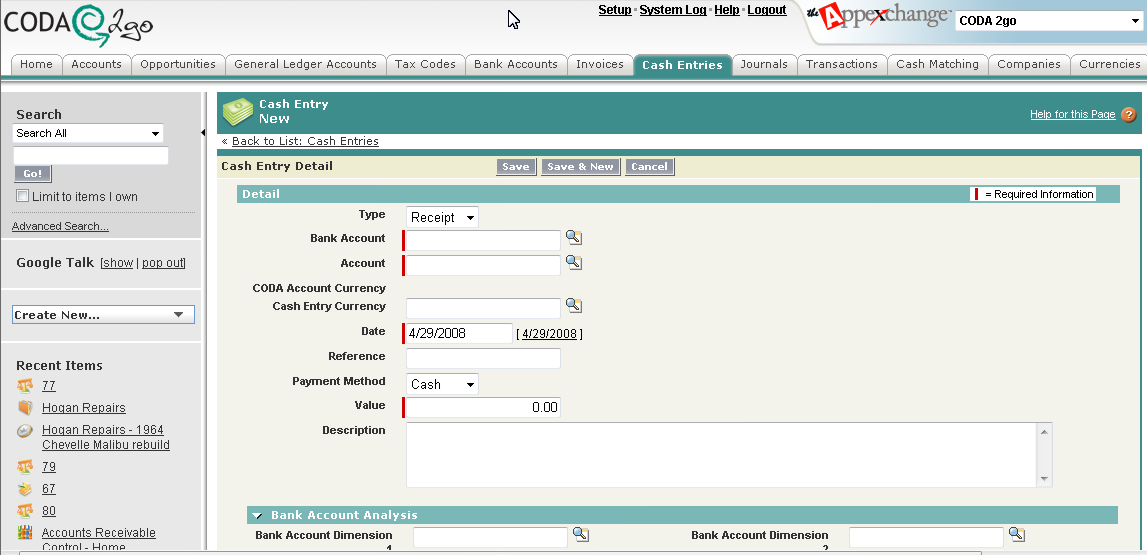EXCLUSIVE: CODA2go on force.com

Today in an exclusive preview, I saw CODA2go's first iteration. CODA2go is accounting software developer CODA's first foray at an on-demand accounting application service built on the force.com platform. CODA claims it is the largest development of its type on force.com.
According to Jeremy Roche, CODA's CEO, the attraction comes in two distinct forms:
- Access to a pre-built infrastructure that includes a security model, workflow, reporting and multi-tenancy
- Ability to gain immediate access to Salesforce.com's customer and partner ecosystem
"Both of these elements help us get to market much more quickly than would be the case if we were trying to develop an on-demand application by ourselves. On infrastructure, we only had to build a domain model and were able to start application coding within three weeks of starting with Salesforce.com. We're modeling our go to market on Salesforce.com's early experience and are already talking with opportunities from five countries" he said.
As part of the go to market strategy, CODA is also partnering with Model Metrics and Appirio, two of Salesforce.com's consulting partners. CODA believes that early partnering with experienced Salesforce.com partners provides the company with the best opportunity to succeed: "We've chosen partners who understand the finance space as much as their proven success as Salesforce.com implementers," said Roche.
The first business application covers the order to cash process. When the application is released in early June, it will have basic general ledger recording but will not be a full GL since CODA has yet to build the purchasing function. "We want to take this steadily to ensure we both understand how people will use it and give customers an easy entry to on-demand accounting," said Roche.
CODA believes the sweet spot will be service companies that have time and project requirements. It is going to market with multi-company tax and currency engines pre-built. This will give immediate appeal for those companies trading in cross border environments. In the early stages, CODA is restricting availability to English speaking countries: "It makes sense to start with UK/US though I expect we will provision for mainland Europe and other major languages quite quickly," said Roche.
Since the entry point is 'order' CODA2go appears as a set of additional Salesforce.com tabs. This should mean that it is familiar to existing Salesforce.com users. Since it automatically inherits the force.com platform capabilities, CODA2go has immediate access to some of the newer integrations such as GoogleDocs and Spreadsheet: "We're working on an early integration between Google Spreadsheet and our own Excel reporting products," he added. This makes a lot of sense for finance people who prefer the power of Excel for reporting and analysis.
CODA believes it needs six to 12 months in order to achieve a reasonable subscriber base. Roche is clear about what this means for the company: "We see this as the most cost effective long term play for a company like ours that would otherwise find it difficult to reach large numbers of potential customers."
CODA's strategy does carry some risks. It ties the company to Salesforce.com's fortunes and to that extent, it will have to contend with ongoing speculation as to whether Salesforce.com is an acquisition target. Roche does not seem overly worried about this: "There are always risks in this kind of venture but we're confident that there is enough value for both companies to do well. It's the kind of thing Salesforce wants to see and it's a good fit for us."
Introductory pricing is $125/user/month with a lower, $20/user/month 'connector' charge for occasional users. An example would be sales personnel who require access to days sales outstanding data.
